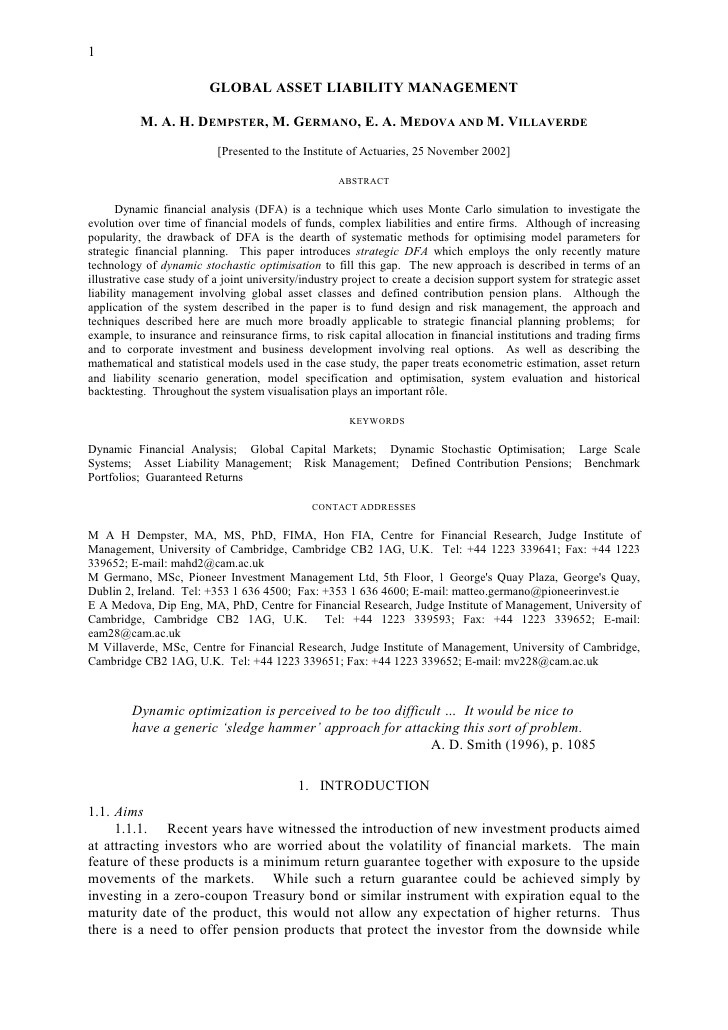Asset liability management_1
Post on: 7 Май, 2015 No Comment

The Net Stable Funding Ratio (NSFR) shall be implemented as a binding minimum ratio from 2018 on. It is defined as available stable funding (ASF) divided by required stable funding (RSF). Its supervisory monitoring started in 2014, according to European CRR-Regulation. Currently, the Basel Committee on Banking Supervisory revises it’s consultation on the final calibration of the NSFR dating from January 2014. Analysis suggests that National characteristics of Asset and Liability Markets matter and shall be taken into account defining a standardised ratio.
One goal of the NSFR is to allow for a better governance of liquidity risk stemming from maturity transformation of less than one year: Banks are required to hold an adequate portion of stable funding sources such as deposits or bond market financing, or even capital, instead of relying on short-term wholesale funding.
In addition to liquidity risk, the NSFR adresses the risk of increased leverage: Analysis shows that the increased leverage in the forefront of the Financial Crisis was often not financed by capital but by short-term wholesale funding. As the NSFR defines different levels of available and required stable funding, balance sheet growth is limited as long as it is based on non stable funding. For example, the available stable funding differs between regulatory capital which enjoys a 100 percent available stable funding (ASF) weight while stable non-maturity deposits receive a 95 percent ASF weight. In contrast, funding from a financial institution with residual maturity less than six months has a 0 percent ASF. Similarly, liquid assets enjoy lower required stable funding (RSF) factors while illiquid assets are assigned higher RSF factors.
This strong impact on asset liability management requires a careful calibration of the stability factors. As Gobat/Yanase/Maloney (IMF, WP/14/106) state. „changes in ASF and RSF factors for important asset and liability components make a substantial difference in the final NSFR figure, underlining the importance of having a proper calibration at the national level.“ One way to balance between the goal implementing a standardised single rule on European level and the flexibility required to take national characteristics into account, „is to allow for some “guided discretion,” particularly by allowing countries to apply more stringent parameters.“ For example „Supervisors will need to take a cautious approach in designing the deposit weights for the NSFR, as deposit stability characteristics will most likely vary among jurisdictions, depending on market and institutional factors.“
Liquidity Risk was one of the main drivers of the financial crisis. To increase stress resistance in case of a systemic liquidity shortfall that hits asset and funding markets, the regulator asks banks to improve transparency and liquidity risk management. One element of the new Liquidity Framework is the Liquidity Coverage Ratio (LCR): Banks shall hold sufficient High Quality Liquid Assets (HQLA) to fund net cash outflows under stressed markets for a period of 30 days. The LCR will be binding from January 1st 2015 on. Final provisions are expected until June 30th 2014.
There is evidence that the LCR has little impact on bank strategy. Heiko Hesse and Stefan W Schmitz note :

- An analysis of the European Banking Authority (EBA) shows that b etween Q2 2011 and Q4 2012, banks adjusted their balance sheets mainly by increasing their holdings of HQLA (especially drawable central bank reserves, sovereign bonds, and covered bonds).
- Reductions of net cash outflows played a lesser role.
- In general, banks with an estimated LCR shortfall have a number of ways in their funding plans to become compliant (e.g. lengthen the maturity of their (unsecured) wholesale funding beyond 30 days, promote deposits, reduce costly uncommitted credit lines or increase their proportion of liquid assets in their balance sheets.
- The overall finding that the LCR does not reduce lending to the real economy, SMEs, or trade finance is corroborated by a recent survey of Zeb (2013) which finds that banks in their sample (23 Austrian and German banks) mainly plan to adjust by reducing unsecured/secured outflows, increasing HQLA and committed lines, but not by cutting loans to the real economy.
Besides bank strategy, the EBA expects that the shortfall of HQLA has little impact on prices and demand on the financial markets: Some jurisdictions show severe shortfalls. Overall, the extra demand for HQLA is at about EUR 70 to 264 billion. This amounts to only 0.6 to 2.4% of the total market size.
Overall the LCR seems to have little impact on bank strategy and bank funding of the real economy. Still, the rules with regard to LCR are not final. Main parts of the HQLA are still under discussion, such as the inclusion of central bank facilities, which is allowed by the CRR, but criticised by EBA and the Basel Committee on Banking Supervision. The outcome of this discussion may result in changes to said findings. However, we expect main drivers for bank strategy resulting from the controversial field of capital requirements and cost income measures and less from the LCR.














